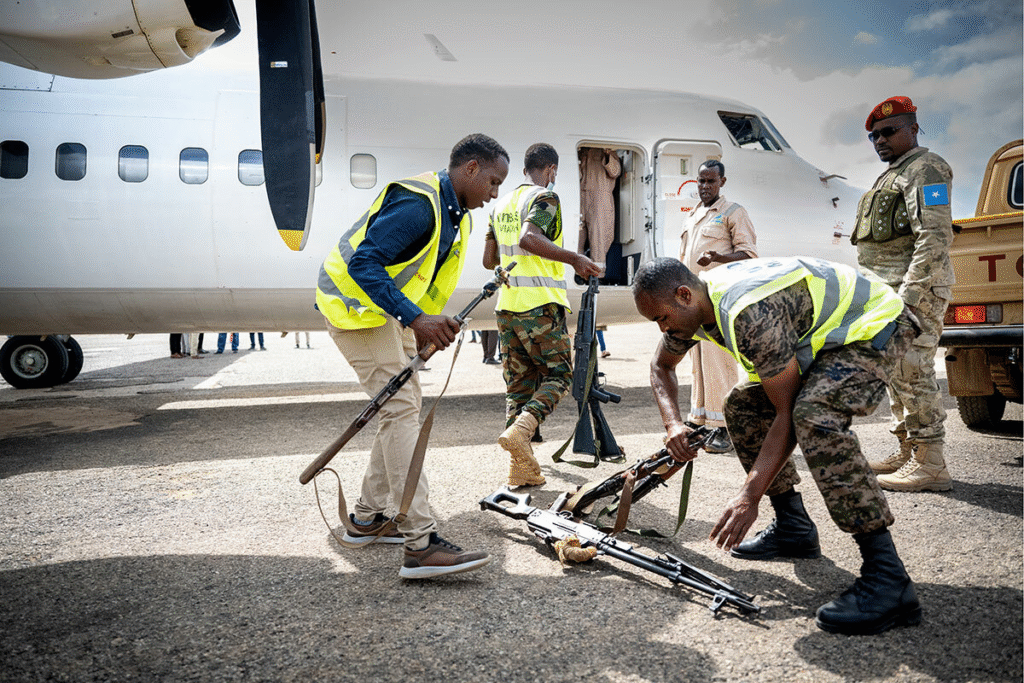
In 2023, Somalia’s aviation sector remained in a fragile state, reflecting the broader recovery challenges of a country emerging from decades of conflict. While the federal government and civil aviation authorities continued efforts to rebuild aviation infrastructure and oversight systems, safety concerns persisted. Airspace management, outdated regulations, and weak enforcement mechanisms posed significant risks to commercial and humanitarian flights. The year highlighted both the urgency of reform and the complexity of Somalia’s air transport landscape.
Somalia lost functional control over its airspace during the civil war in the early 1990s. Since then, aviation services—including air traffic control, licensing, and safety inspections—were either handled from abroad or carried out inconsistently by local authorities. The re-establishment of the Somali Civil Aviation Authority (SCAA) in 2018 was a milestone, but its capacity remains limited.
The fragile security environment continues to deter foreign operators and restricts technical assessments and audits. At the same time, airports in Mogadishu, Hargeisa, and Kismayo are facing rising passenger and cargo demand, especially from humanitarian and diaspora-linked travel.
Key Safety Concerns in 2023
- Airspace Control: While Somalia formally regained control of its airspace in 2022, coordination between the SCAA and regional operators remained uneven in 2023. Gaps in communication, equipment reliability, and training contributed to increased risk of airspace conflicts, particularly over southern and central Somalia.
- Regulatory Gaps: The country’s aviation laws, and technical regulations remain outdated. The current Civil Aviation Act lacks detailed procedures for licensing, safety audits, or sanctioning of non-compliant operators. As a result, oversight is weak, and operators often rely on informal practices.
- Aircraft Condition: Several domestic carriers operate aging fleets with minimal safety upgrades. There were multiple reports in 2023 of emergency landings due to technical issues—often involving poorly maintained aircraft or inadequate pre-flight checks.
- Unlicensed Operators: In some parts of the country, flights are operated by companies without formal licenses or oversight. These are typically charter services or small air cargo companies. Their operations pose serious risks to passengers and complicate regulatory enforcement.
- Airport Security and Infrastructure: While Mogadishu’s Aden Adde International Airport has seen upgrades under Turkish management, most regional airports lack basic security screening, lighting systems, and fire safety equipment. This limits night operations and increases risk during take-offs and landings.

Ongoing Reforms and Support
Despite the challenges, the federal government has taken steps to improve aviation safety:
- Training Initiatives: The SCAA launched pilot and inspector training programs with support from ICAO and the United Nations Support Office in Somalia (UNSOS). Over 30 personnel were trained in safety auditing and licensing procedures in 2023.
- Draft Regulatory Frameworks: A new set of aviation safety regulations was submitted to Parliament, covering aircraft operations, personnel licensing, and airworthiness standards. However, these had yet to be enacted by year-end.
- International Engagement: Somalia resumed participation in ICAO regional meetings and entered talks with the East African Community to align its air safety protocols with neighboring states.
- Donor Assistance: The African Development Bank and EU-funded programs provided technical assistance and funding for airport rehabilitation and equipment procurement, including navigation aids and weather stations.
Industry and Stakeholder Concerns
Airlines and humanitarian flight operators welcomed the reforms but stressed the need for faster implementation. They cited delays in flight approvals, inconsistent regulatory messaging, and a lack of clear enforcement mechanisms. Local aviation businesses also called for the government to establish a single aviation licensing window and to formalize airport user charges.
NGOs operating in conflict-prone regions expressed concerns about the safety of humanitarian flights, urging better coordination between the SCAA and UN humanitarian air services.

Finish
Somalia’s aviation sector remains in a fragile recovery phase, with major safety and oversight issues still unresolved in 2023. While efforts to restore institutional capacity and international engagement are commendable, much work remains to create a safe, reliable, and regulated airspace. The path forward requires sustained investment, legal reform, and enhanced coordination between federal authorities and regional operators to ensure that the skies over Somalia become safer for all.


